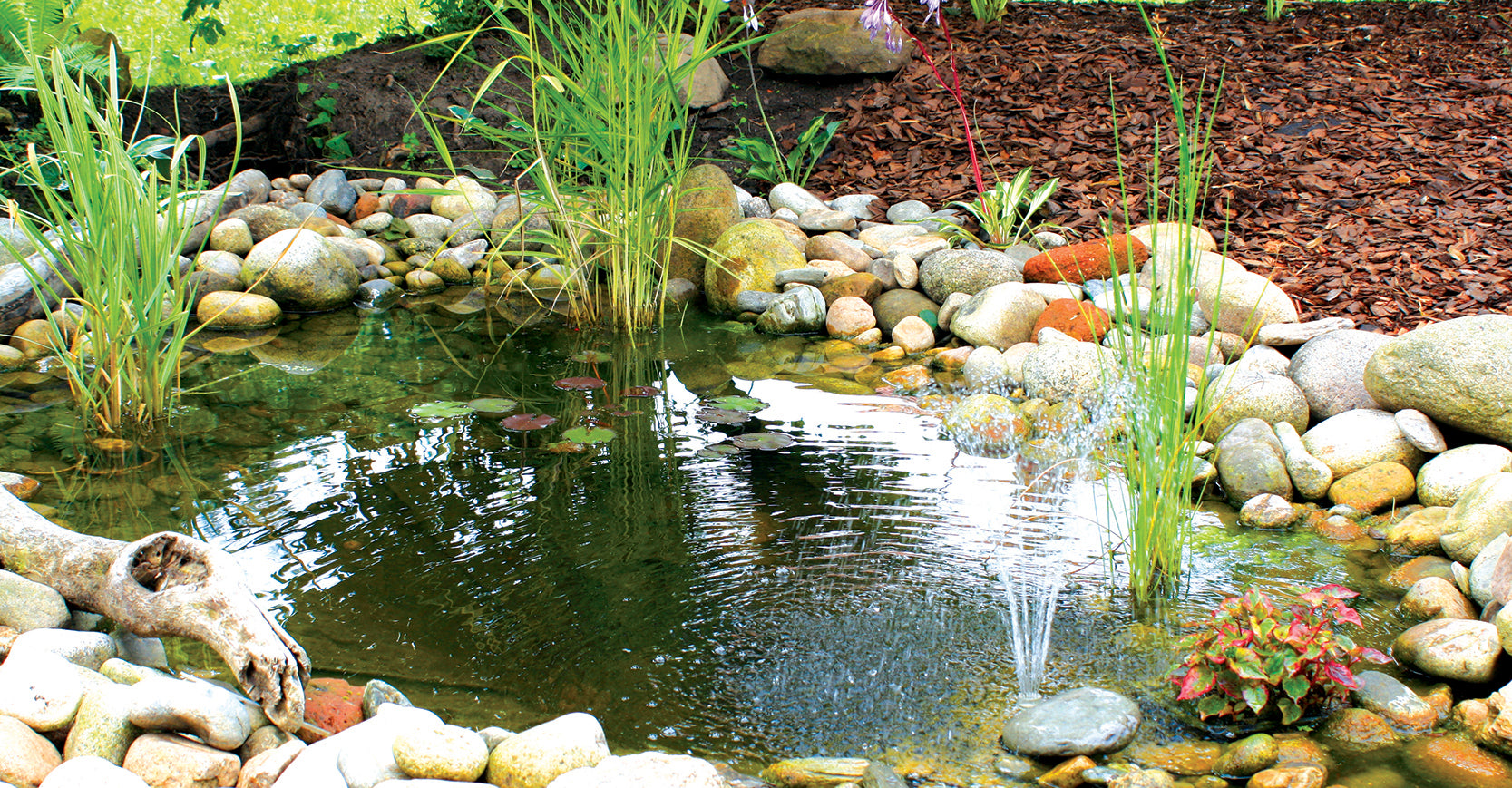
Springtime is showtime
By Adam Woodhams
Springtime is showtime for the garden. Even plants that don't go into a winter dormancy are bouncing back to life with new foliage and flowers, leaving the old season's growth behind. Your pond is just the same. Most pond plants slow down through the cooler months, and on many, their foliage will die back. One of the best ways to get your pond looking fab fast is to get your plants tidied up and fed.
The Big Tidy
Plants growing in the pond base, gravel, and sediment, are best left with minimal disturbance unless, of course, they have spread too far and need dividing. The reason you don't want to disturb or lift them unnecessarily is that they tend to bind a lot of fine material together in their root mass, and moving them will often lead to this silty material clouding the water and clogging your filter. If they need a tidy-up, use a pair of garden scissors or pruners to trim off any dead leaves right down towards the base, not just at water level.
If you need to lift them to divide or thin out, do so with care to avoid that silt being disturbed. You may find it easier to lower the pond's water level as pond water can do with a refresh at this time too.
If your plants are potted, do any maintenance you can, such as trimming, with them in-situ. If the plants have overgrown their pots, then carefully lift them from the pond so they can be tidied and re-potted into larger pots or divided. Now is the best time to re-pot water lilies too. The root structures of water lilies can fill a pot surprisingly quickly, so even last year's new plants may need some attention.
Re-potting
When you re-pot your pond plants, you can use specialised water plant mixes; however, a good quality, standards-approved potting mix, as long as it doesn't contain water crystals, is quite suitable too. You will find that mixing around 1/3rd of 'sharp' or propagating sand through the mix will make for a better water plant blend as it allows for improved water movement and adds weight.
When you do re-pot, it's just the same as re-potting any other plant; however, put the plants a little deeper in the mix and then finish filling with potting mix to around 3cm or 4cm down from the top of the pot. Then cover the mix with a layer around 2 to 3cm thick of either propagating sand or small pebbles (10mm or less in diameter). This ensures your potting mix won't float away.
As you re-pot, make sure you use a sharp knife or secateurs to trim off any dead root or rhizome sections too.
You can just use regular plastic pots or even terracotta pots; however, you are best to use specialised water plant planting baskets. PondMAX has a range of round and square baskets that have been engineered to maximise water plant performance. They have an open mesh pattern all over to ensure maximum movement of water, air, and nutrients around the plant roots.
Before putting re-potted plants back into your pond, they need to be thoroughly saturated until the water running out of the pots runs clear. This is to remove any fine material which may otherwise cloud pond water.
Feeding
Just like your garden plants, your pond plants will benefit from regular feeding too. Unlike your garden plants, however, you won't find an aisle full of products to choose from. Fertilisers for pond plants are very specialised. The reason for this is they need to be designed to release slowly when totally immersed and do not contain an excess of nutrients which may encourage algae growth.
Pond plant fertilisers will come in tablet or plug form, and these are buried or pushed into the potting mix or around the roots of plants growing in the pond base. The simplest to use, with a 6-month fertilising lifespan, and easiest to buy is Osmocote for water gardens.



